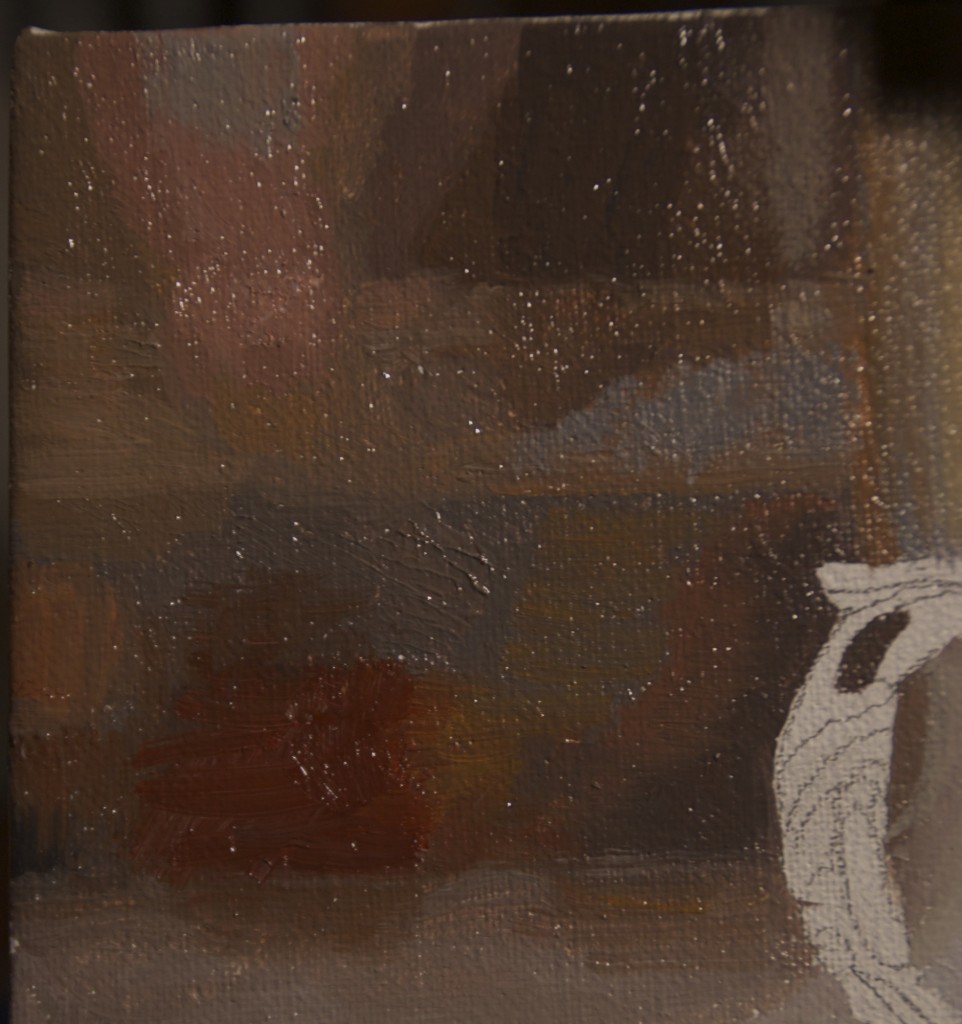The Goldilocks Zone
To continue the train of thought from my last post, I’m working on a modest still life, very simple, painting it at Goldilocks speed, not too rushed but not too cautious, either. If I can generalize an area of varied color into a single hue, I’ll do it, and save the detail work for later, or leave it, or I might linger as long as it takes on certain details. While I’ve been working on this painting, my mind has felt restfully attentive to the quality of the paint I’m applying as much as the image I’m trying to create. I’m working from a photograph I took of a small pewter sugar bowl in our kitchen, and I’m sticking to the narrow depth of field in the shot, which blurs the background slightly. It’s my version of photorealism, though it won’t pass for a photograph up close. I’m simply being straightforward about the artifacts of a shot taken at a certain aperture setting. I almost always use my own photography when I paint an image, sometimes working from multiple shots of a subject in order to get what I want. I had a conversation recently over lunch with Rick Harrington about visibly “pushing paint around.” Rick’s sense was that being faithful to a photograph was antithetical to his love of how paint feels as you apply it and how paint is what a painting is really about. Working from a photograph feels constraining to him, and takes his focus away from the paint itself. Clement Greenburg would approve. I went away feeling as if I disagreed, though not entirely, but without being able to pin down why the conversation left me ambivalent.
I’m happy if I’m working economically, getting more out of the paint than I seem to be putting into it. I keep the process as simple-minded and transparent as I can. The painters I usually respond to most enthusiastically show me exactly what was happening as the painter worked: everything seems to be there on the surface in Fairfield Porter or Neil Welliver or Jenny Saville, which makes the final result so much more remarkable when the image clicks into place, despite how little precise detail the painter is actually rendering. You can track their effort and you can see how they did what they did, though when you stand back you see more, it seems, than the effort they invested. There are no tricks in the magic act. It’s just paint on a surface, and yet it’s also a scene that evokes all sorts of reactions as you forget that it’s paint. The tension is there between seeing the paint and seeing the scene, and the more I can see how simply and directly the painter created the image, the more interesting the tension between paint and image becomes.
Sometimes, for me, this means being very true to the source MORE
